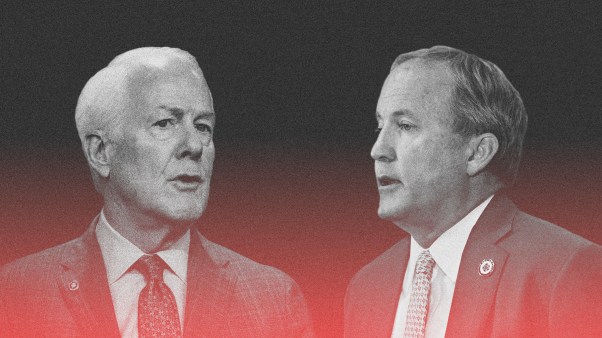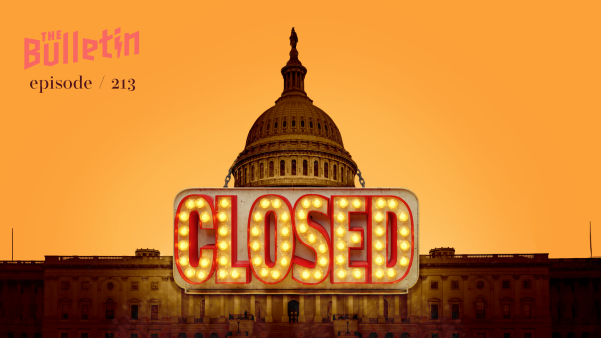Star Trek and Sacred Ground: Explorations of Star Trek, Religion, and American Culture
edited by Jennifer E. Porter and Darcee L. McLaren
State University of New York Press, 315 pages, $20.95, paper
Of the making of Star Trek books there is no end. Along with countless novels, memoirs and coffee-table books, the television and movie series has inspired an astonishing number of academic works—technobabble leavened with sociobabble. Some professors use Trek as a pedagogical aid: the physics, metaphysics, ethics, biology, and computers of Trek have been explored in separate volumes. Likewise, Trek‘s treatment of race and gender have been scrutinized, and reasons for the show’s popularity have been posited.
Given that popularity, it seems safe to say that Trek embodies a contemporary myth, one that touches people deeply—from those still in their parents’ basement to those beamed up to ivory towers. It’s tempting to laugh at Trek‘s often obsessive fans, but tread carefully, for Trek covers sacred ground. Setting a story amid the silent, endless spaces ensures Big Questions will be raised. Accordingly, Star Trek and Sacred Ground fills one of the few remaining gaps in the literature with a look at Trek‘s take on religion.
Trek‘s take on anything, including the laws of physics, is famous for being adjusted to the needs of a particular episode. Yet there’s a clearly discernable drift to Trek‘s treatment of religion, one which—not surprisingly for a popular phenomenon—runs parallel with our society’s rising interest in spirituality during the past three decades.
Part one of Sacred Ground maps that flow. Classic Trek (1966-69) reflected creator Gene Roddenberry’s inclination to leave religion in the wake of Progress with poverty, prejudice, and war. Yet Trek, “like American society at that time, was haunted by God and God questions.” Biblical allusions abound and theological motifs are a constant preoccupation, one carried into the Trek theatrical films (1989’s Star Trek V: The Final Frontier took the Enterprise crew on an ill-fated—and ill-reviewed—search for God himself).
This ambivalence is magnified in the second television series, Star Trek: The Next Generation (1987-94), where confidence in Progress approaches the level of a revivalist faith. Religion is left to primitive aliens, not to citizens of the Federation, who have evolved since the time they (in the words of one character) “murdered each other in quarrels over tribal-god images.”
On Roddenberry’s 1991 death, the franchise passed to a generation less keen on ideological purity than on ratings, which meant accommodating cultural shifts: science and Progress were down, spirituality up. The space station of Star Trek: Deep Space Nine (1993-99) hovered between a race of devout aliens and their gods. Commander Chakotay brought to Star Trek: Voyager (1995-2001) vision quests, spirit guides, and other Native American New Agery. Yet faith as expressed on these later shows is often content-free, something people do rather than believe. And in a true reflection of current culture, “respect” for religion comes at the price of neutralizing truth claims: Trek avoids asking whether a religion is true, only whether it seems to work.
Mythmaking
The evolution of Trek‘s explicit treatment of religion is fascinating, but it’s not the whole story. Just as classic Trek combines the logical Spock with the intuitive Captain Kirk, Sacred Ground adds a meditation on religious motifs woven into the stories.In a way, this acknowledgment of Trek‘s mythic dimension calls into question the enterprise of measuring Trek against the real world. At some point such left-brained analysis is like hearing the poet describe a “city of the Big Shoulders,” then going off to check the shoulder sizes of other cities.
Understanding myth is not a simple matching game (equating “the Force” of Star Wars with Hinduism), for myth can’t be reduced to that kind of real-world correspondence. It resonates. It plucks inner chords that catch the vibrations of the universe.
From a Christian view, it’s no wonder that Trek is obsessed with motifs of suffering, sacrifice, and resurrection. This is the story in our bones, the one human beings tell every chance they get, in every genre. The irony of Roddenberry’s attempt to leave religion behind is that it is left no further behind than the back seat, where it has persistently directed the entire series.
This explains why Trek itself seems such a religious phenomenon. The final section of Sacred Ground examines the devotion of Trek‘s fans, cataloging the familiar trappings of cult membership: from relics to rituals and pilgrimages to conventions. The sociobabble is thickest here, but it is clear that people come to Trek for the experience of community and sense of belonging.
There’s some tunnel vision, no hint that a work scrutinized for mythic resonances might simply be a legendary stinker directed by William Shatner. But if you’re buying only one academic Trek book, those on physics or even metaphysics won’t take you as far into Trek‘s secret heart as Sacred Ground (though the forthcoming Religions of Star Trek, unavailable for review at press time, will try). And while the ethics of Never-Never Land and the politics of Oz are beside the point, playing the matching game can also have its pleasures.
Mike Hertenstein is the author of The Double Vision of Star Trek (Cornerstone Press, 1998).
Copyright © 2001 Christianity Today. Click for reprint information.
Related Elsewhere
Books and Culture magazine discussed the prevalent religious philosophy of most modern science fiction in “Sci-Fi’s Biofascism.”Religious watchers differ in their interpretations of Star Trek, some relating lessons to Unitarian principles, others claiming”The Real Star Trek Theology: Gene Roddenberry’s Pantheism..”
There are classes about Star Trek and religion all over the Web, but the most extensive is Raymond Nighan’s course that uses Web links and Porter and McLaren’s book as the basis for his lectures and questions.
The author of “Confessions of a Star Trek Child” says that 27 percent of the respondents to her poll said that Star Trek influenced their morals as much as their parents did.
Porter and McLaren’s Star Trek and Sacred Ground: Explorations of Star Trek, Religion, and American Culture is available from various online retailers. Amazon.com also has a Star Trek store.
CT’s reviewer, Mike Hertenstein, is the author of The Double Vision of Star Trek: Half-Humans, Evil Twins, and Science Fiction and Selling Satan: The Tragic History of Mike Warnke.
Some Trekkies have compiled a list of signs that you need a break from Star Trek, including sign number 4, “You think the shoulder pads on your dress make you look ‘too Romulan.”










